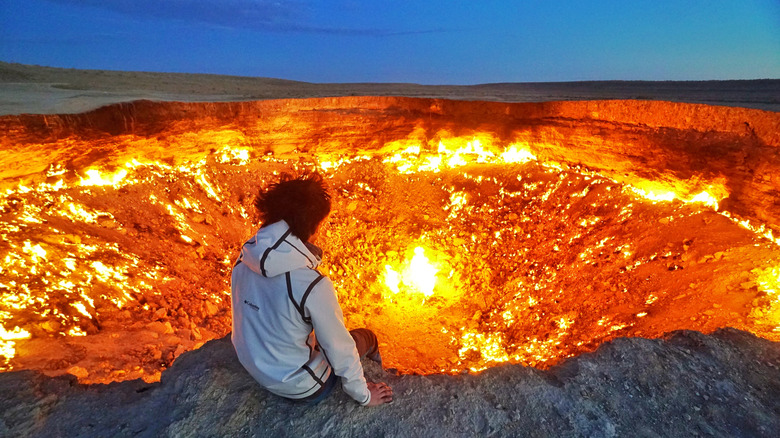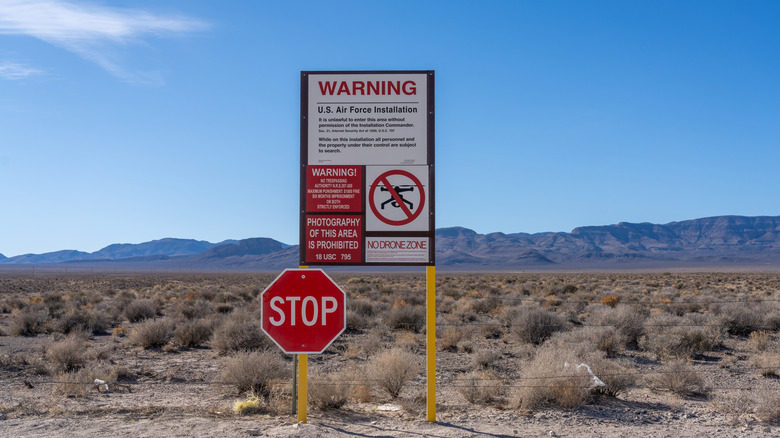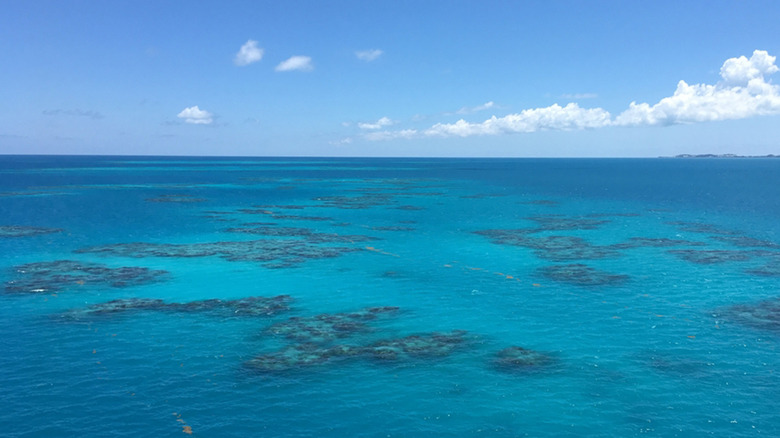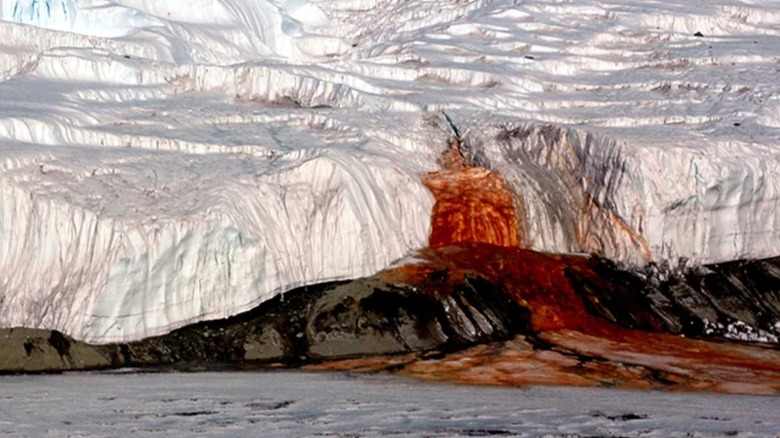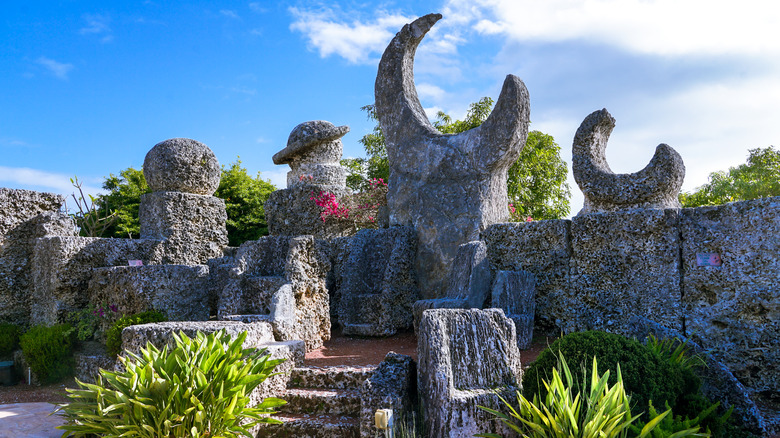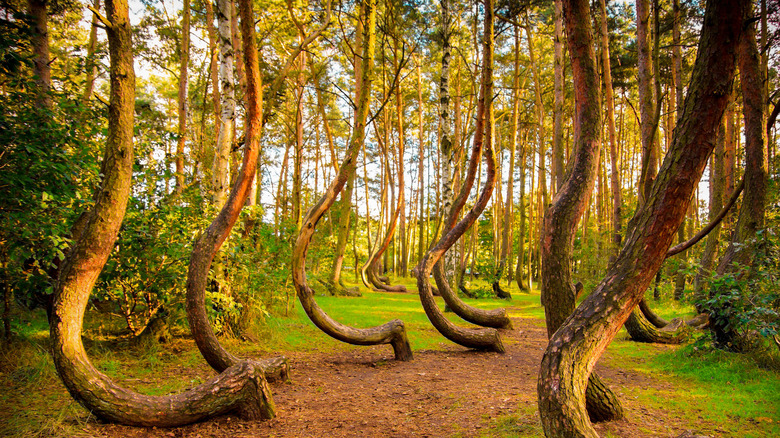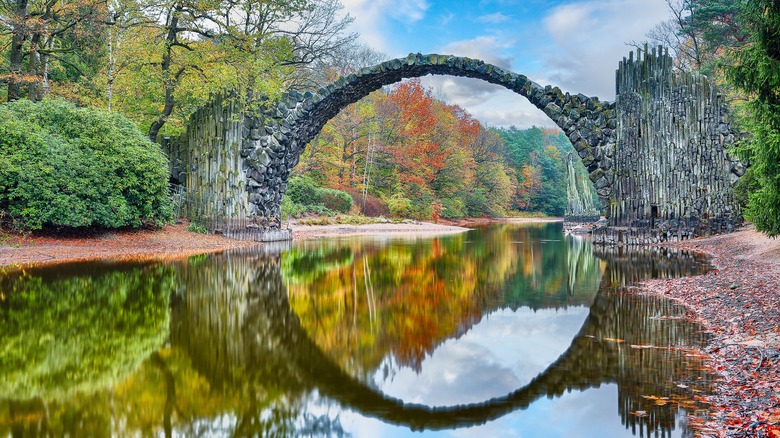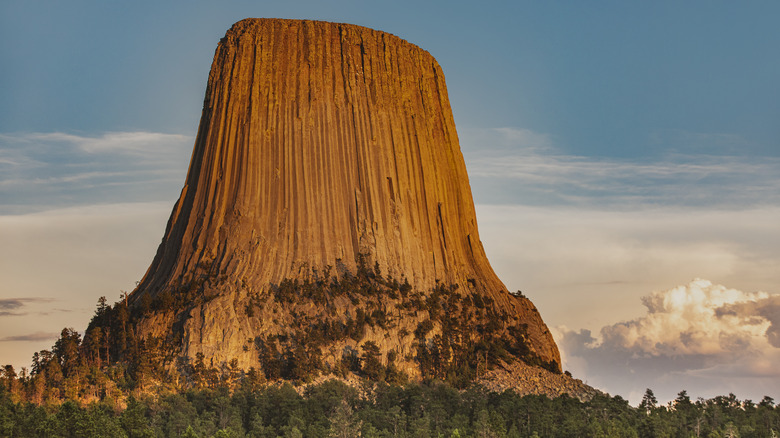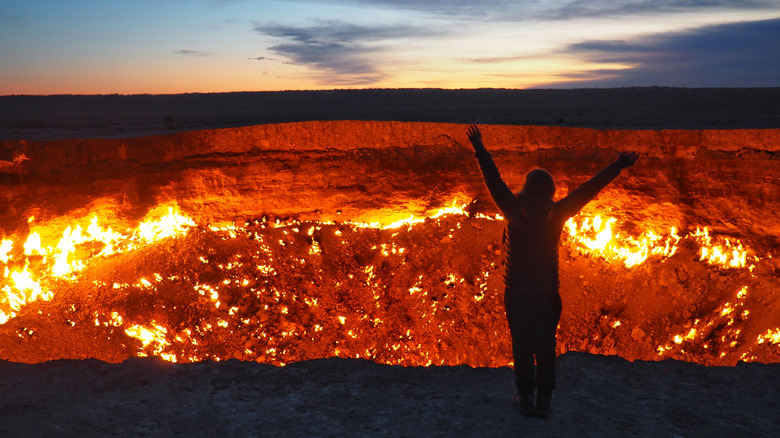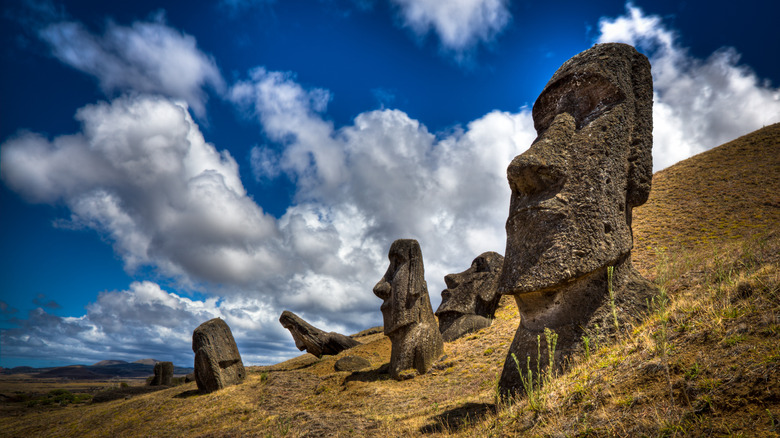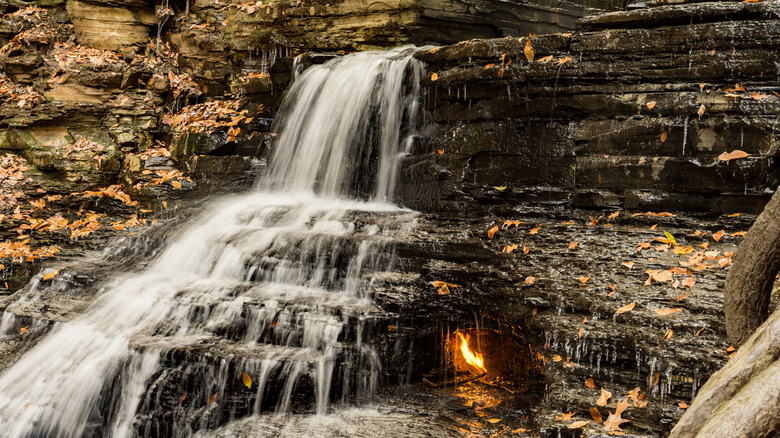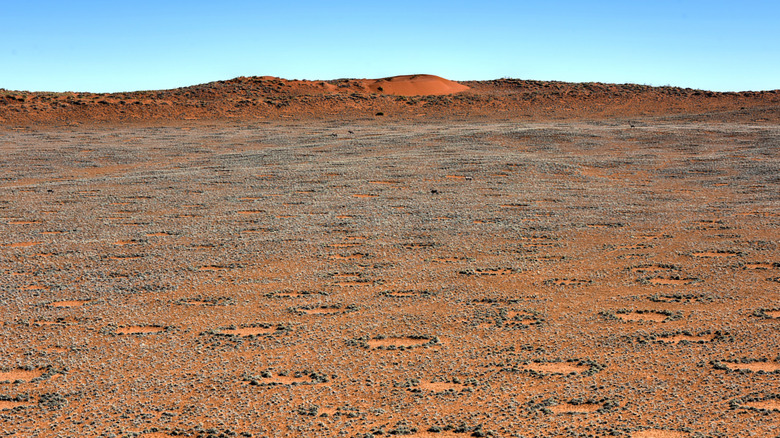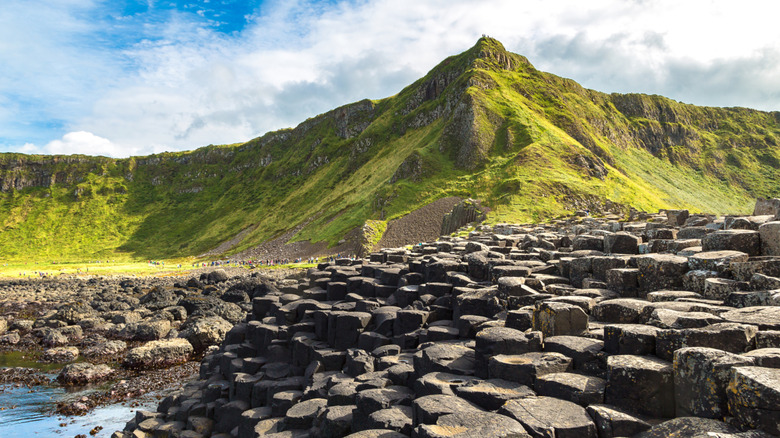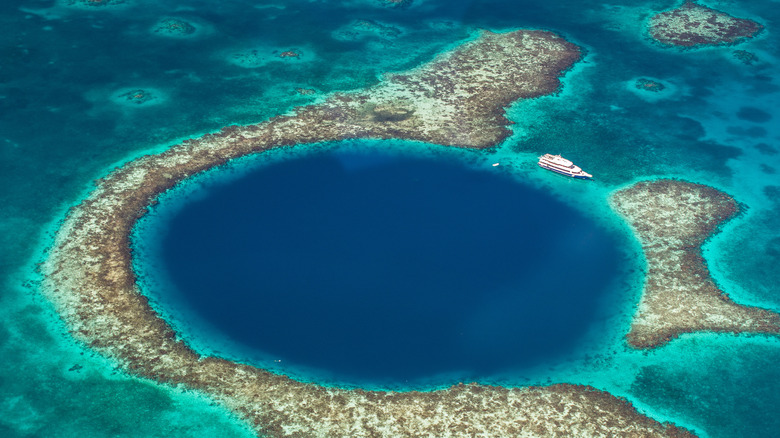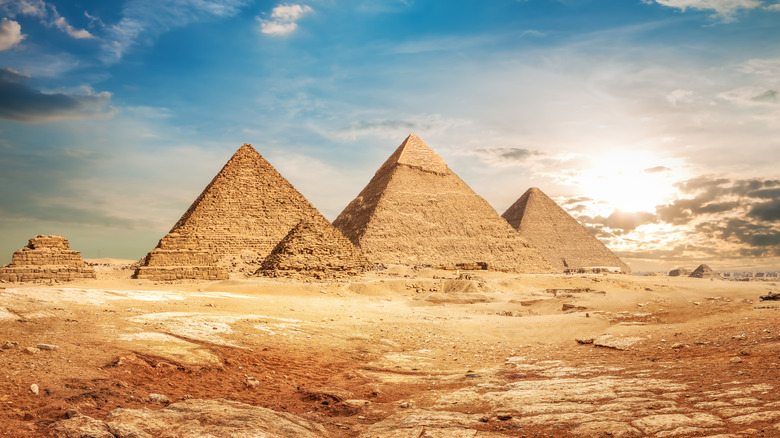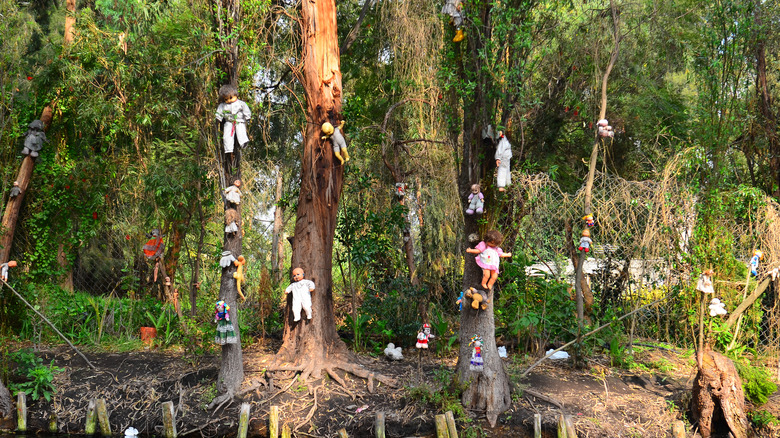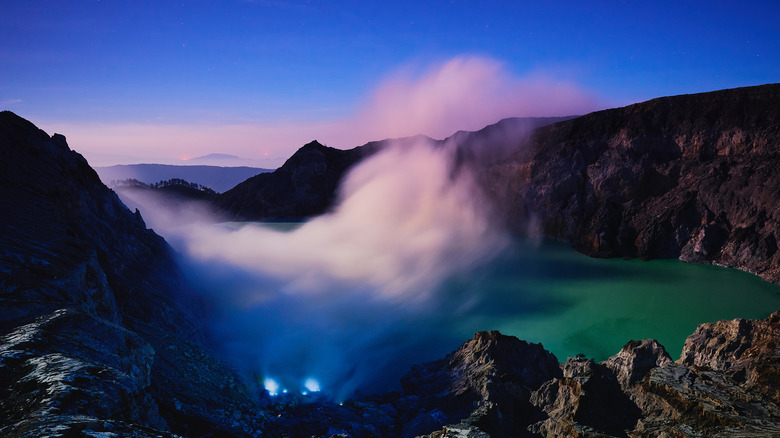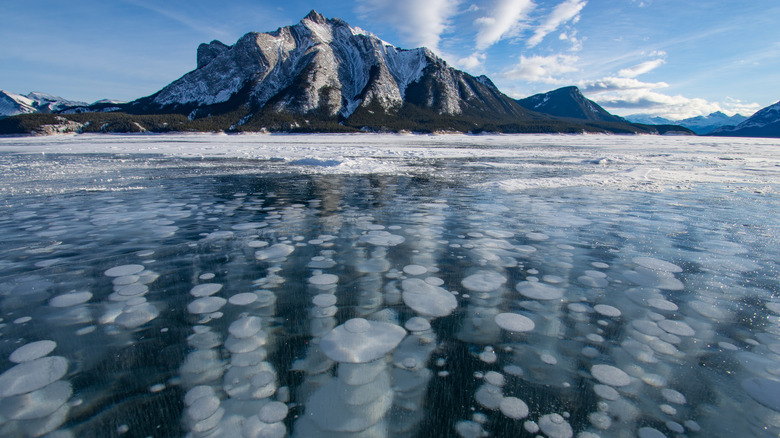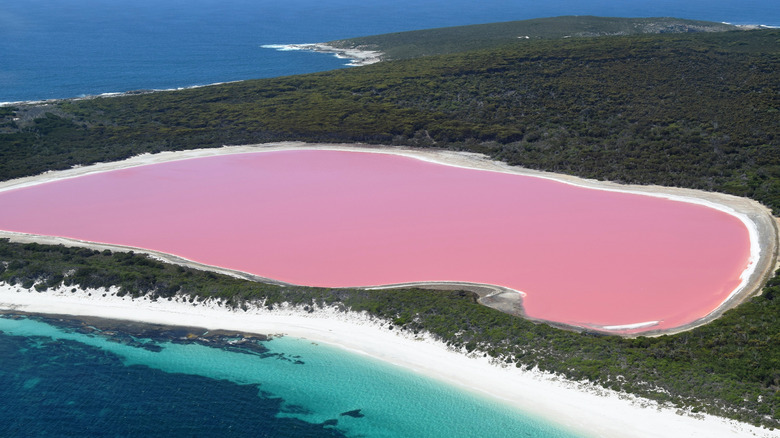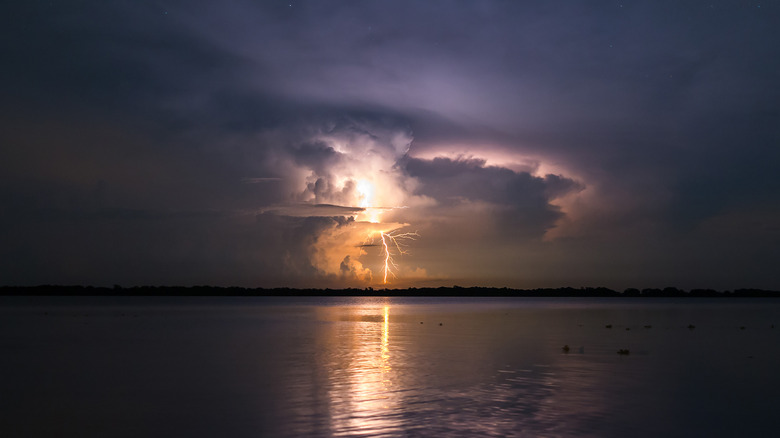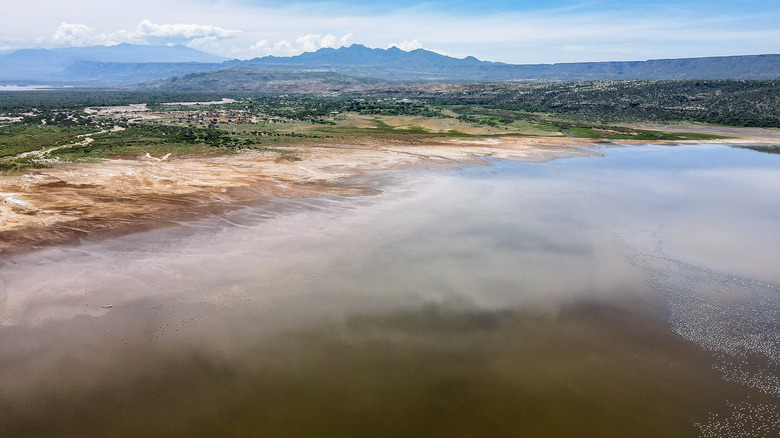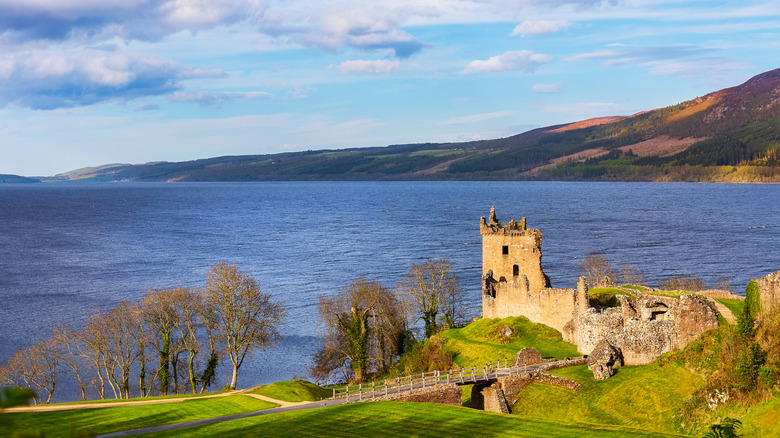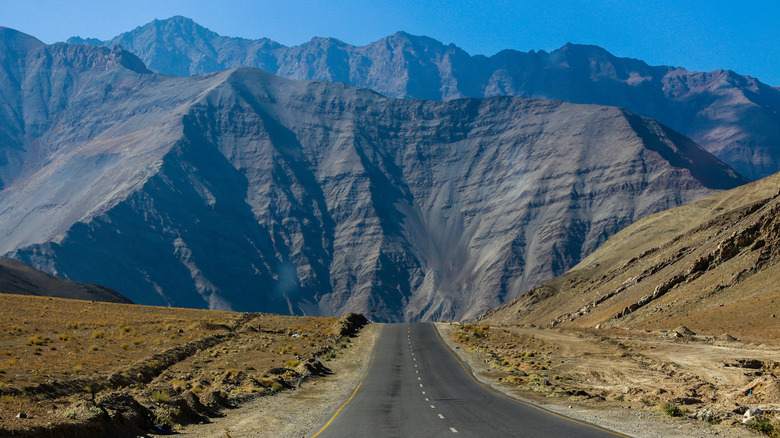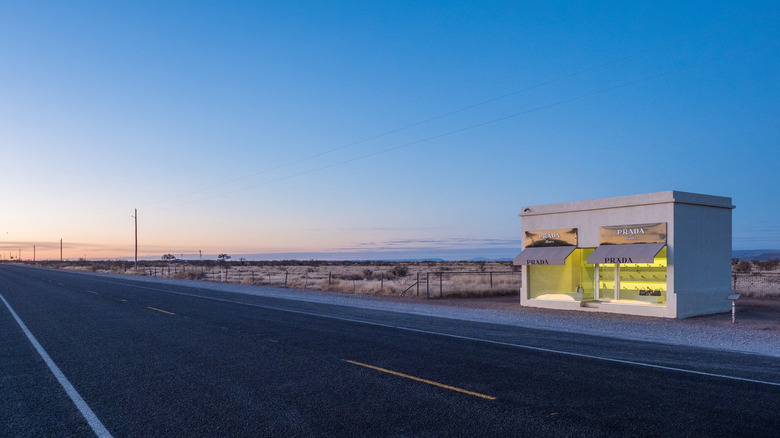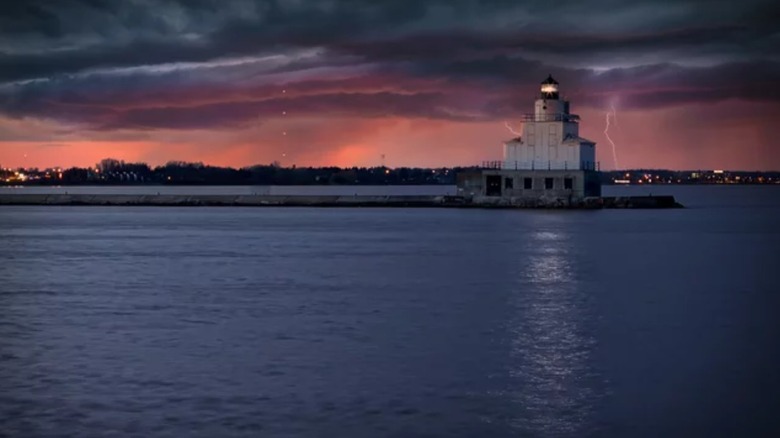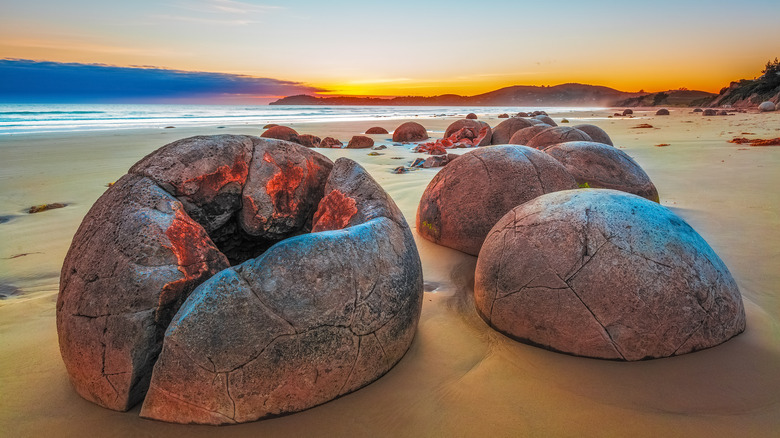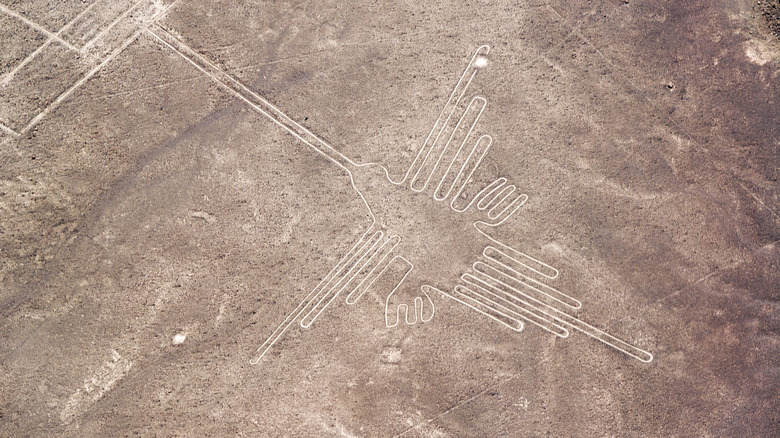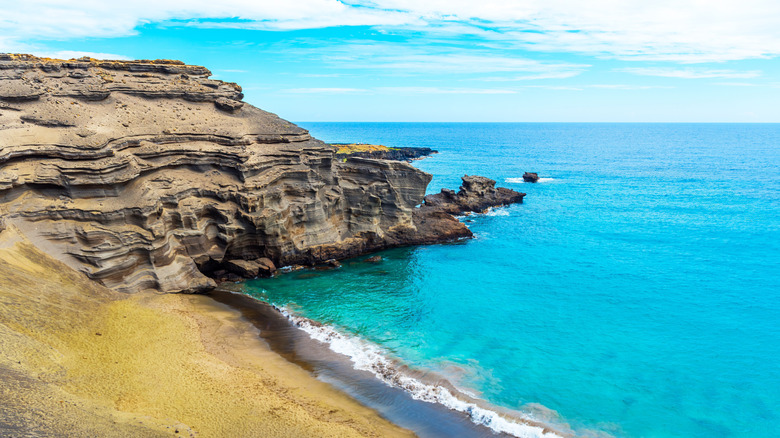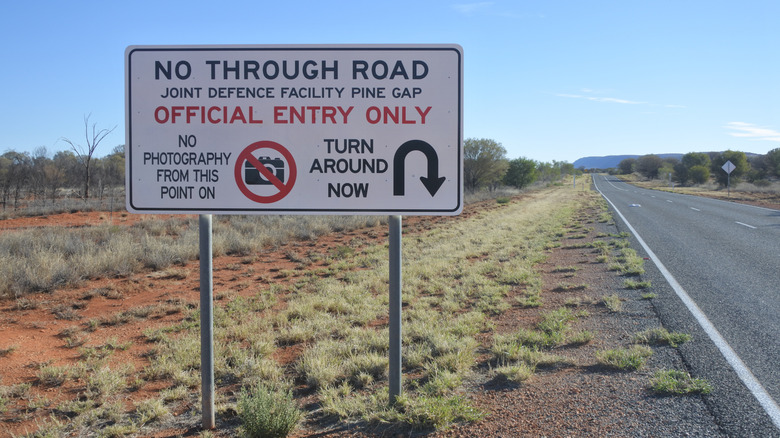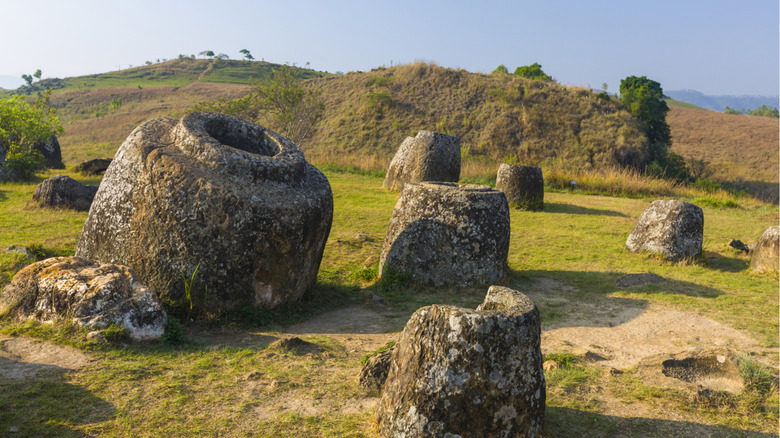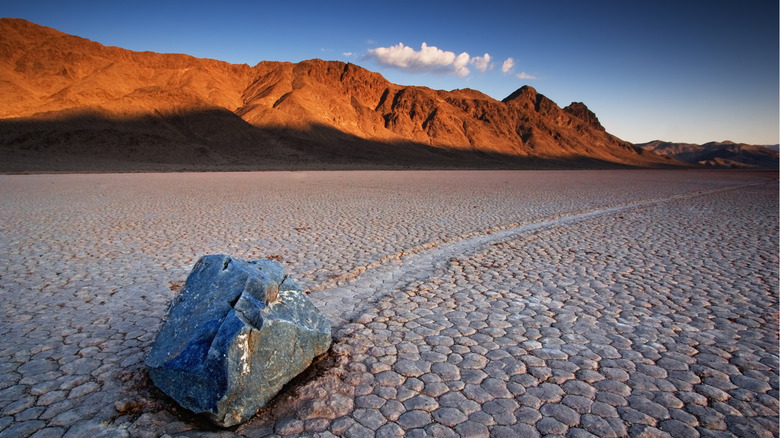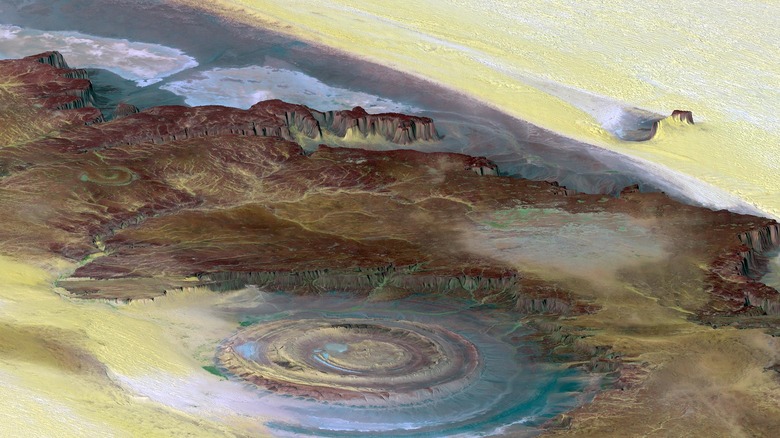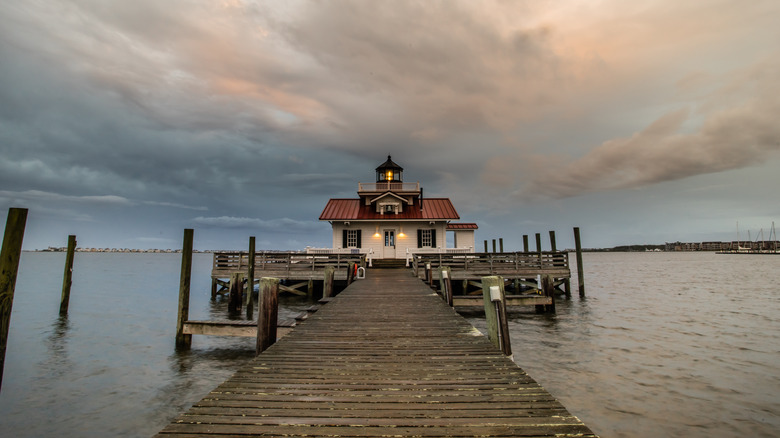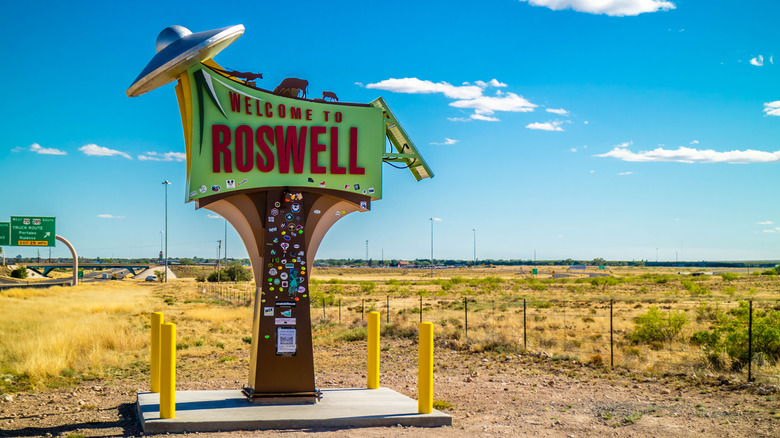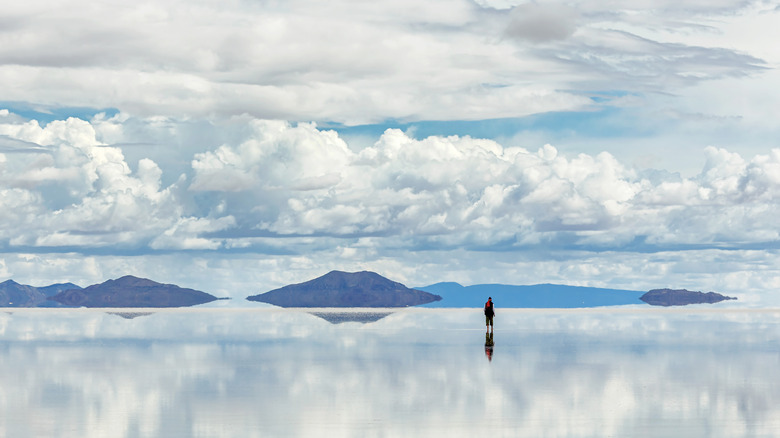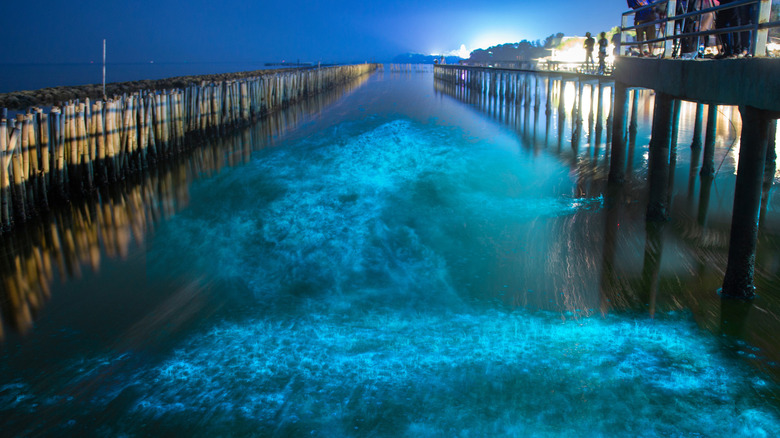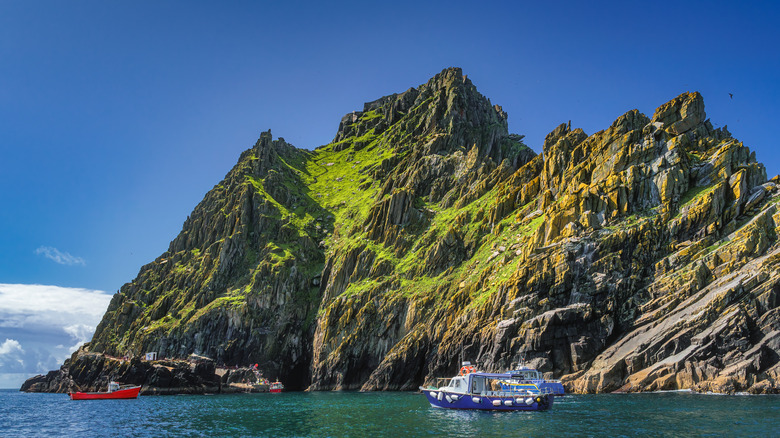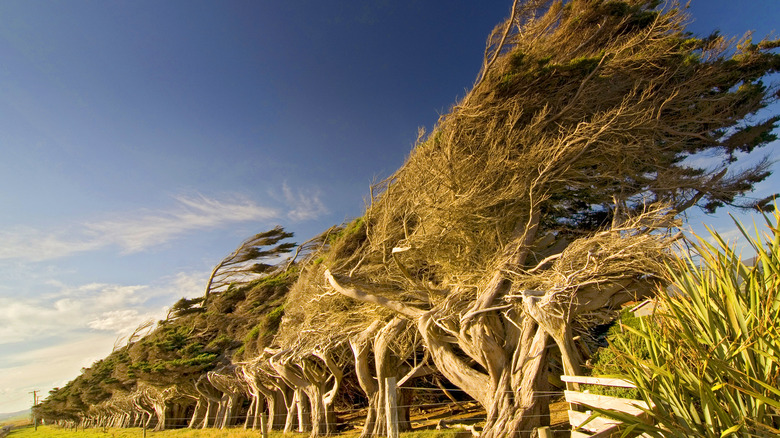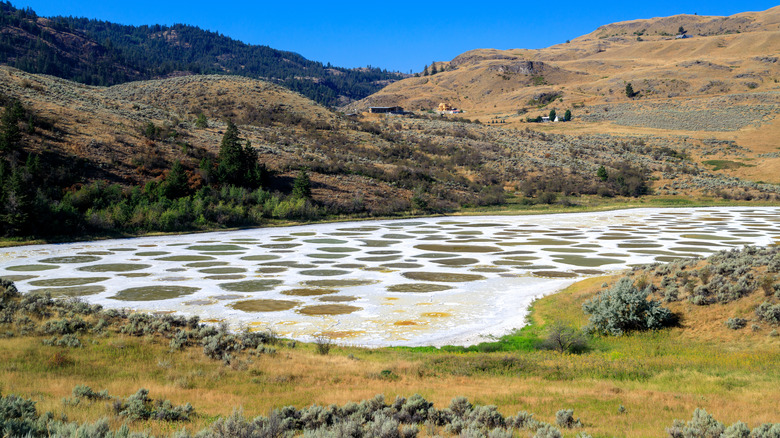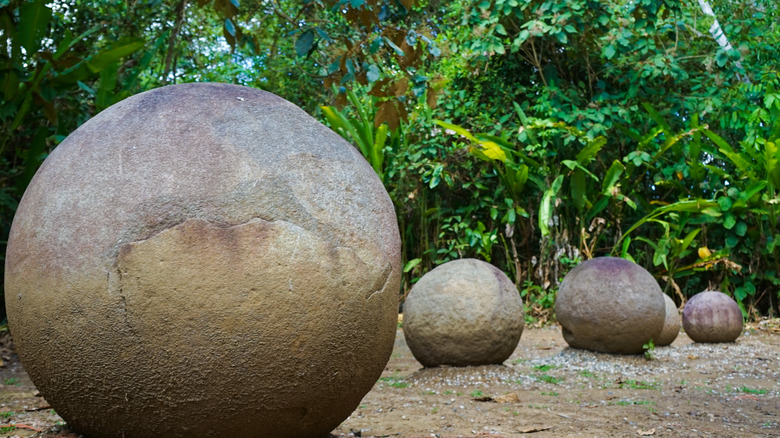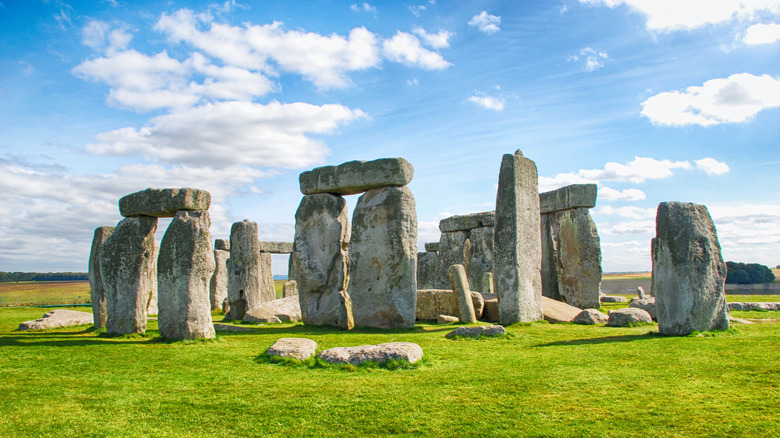The 40 Most Mysterious Places In The Whole Entire World
Planet Earth is a wondrous place that never ceases to amaze with its majestic natural wonders and jaw-dropping man-made marvels. But our planet isn't without its fair share of mysteries, either. If you're fascinated by places with mythical origins or unexplained phenomena that will give you goosebumps, you'll be intrigued by these enigmatic spots around the world.
Area 51 (Nevada)
The Air Force facility commonly known as Area 51, located within the Nevada Test and Training Range, has captured the imagination of both conspiracy theorists and Hollywood for decades. The top-secret military base (which is still operational) is surrounded by barren desert, and the secrecy surrounding its Cold War-era stealth aircraft testing led to rumors of UFOs and aliens, wild government experiments and even a staged moon landing on the premises. Curious civilians can explore the area around the base, which has become a bizarre tourist destination, although they aren't permitted inside.
The Bermuda Triangle
The Bermuda Triangle is perhaps the most famous mysterious place in the world. This area of about 500,000 square miles sits in the Atlantic Ocean between Bermuda, Puerto Rico, and Miami, Florida. More than 20 planes and 50 ships are said to have mysteriously vanished into thin air or crashed without explanation. Though vessels manage to pass through the area with ease every day and there are no more disappearances in the Bermuda Triangle than in any other large, well-traveled area of the ocean, the unexplained accidents have still captured the public imagination.
Blood Falls (Antarctica)
On top of being the coldest and driest place on the planet, Antarctica is home to a crimson-hued waterfall called Blood Falls that starkly pours down five stories along an icy white glacier. Scientists finally determined that the grisly color comes from salty, iron-rich water from inside the glacier oxidizing and rusting once it's exposed to oxygen.
Coral Castle (Homestead, Florida)
A heartbroken man single-handedly built Coral Castle in Homestead, Florida, over the course of 25 years, up until his death in 1951. Without the use of large machinery, he cut, moved, carved, and sculpted more than 1,100 tons of coral rock. How exactly he managed this feat of engineering with only hand tools is still an impressive mystery.
Crooked Forest (Poland)
This Polish forest lives up to its name, with hundreds of peculiar pine trees. Several hundred pine trees were planted there in the 1930s and grew with an almost 90-degree bend at their base, making them look like fishing hooks. Some believe that a technique or human tool was actually used to make the trees curve this way, while others speculate that a winter snowstorm or some other damage could have given this fascinating forest its interesting shape.
Devil's Bridge (Kromlau, Germany)
There are multiple places around the world that have been named "Devil's Bridge" due to some sort of supernatural connection, but the most famous one is located in the German town of Kromlau. Known as Rakotzbrücke in German, the parabolic bridge dates back to the 1860s and is one of the most stunning bridges in the world. It forms a perfect circle with its own reflection in the water below, a feat only deemed possible with some otherworldly assistance.
Devils Tower National Monument (Wyoming)
Devils Tower is a dramatic geologic feature that juts out of the rolling prairie surrounding the Black Hills region in Wyoming, and it became the first national monument in the country in 1906. It might seem like a majestic mountain, but it's actually made of molten rock that hardened into fascinating geometric columns. This site is sacred to multiple Native American tribes, and its mythical quality led to it being featured in the sci-fi movie "Close Encounters of the Third Kind." It's still the setting for Native American ceremonies as well as a popular destination for rock climbing and hiking.
Door to Hell (Turkmenistan)
Almost 50 years ago, a gaping, fiery crater opened up in the desert of northern Turkmenistan. The Darvaza Crater, also known as the Door to Hell, is still burning today, and at night its glow can be seen from miles away. The crater is thought to have been created by a Russian natural gas drilling mishap in which engineers set the area on fire to stop the spread of dangerous gases, unaware of how long the fire would burn.
Easter Island (Chile)
This isolated island in the Pacific Ocean was once populated by the Rapa Nui civilization, which erected almost 1,000 giant stone statues known as moai approximately 900 years ago. These towering figures, which stand an average of 13 feet tall and weigh 14 tons apiece, captivated European explorers who first landed on the island in 1722. No one knows for sure why the ancient Polynesians carved and placed the statues across Easter Island, though one theory hypothesizes that they were placed as markers of freshwater sources.
Eternal Flame Falls (Chestnut Ridge Park, New York)
If you follow the route to Shale Creek in New York's Chestnut Ridge Park, you'll find a strange orange-red light glowing behind a waterfall that looks like something out of a fairy tale. This Eternal Flame burning behind the water is fueled by natural methane gas escaping through cracks in the rock. The flame isn't quite eternal though — the water sometimes extinguishes the fire, but visitors often start it up again with a lighter to keep the magic alive.
Fairy Circles (Namibia)
Millions of circular patches dot the desert landscape in the African country of Namibia. These eerie ovals of soil surrounded by rings of grass are known as "fairy circles" because their defined shape and pattern look as if they've been created by small spritely creatures. They can range in size from about 12 feet to about 114 feet. While scientists have many theories, including creepy crawlies like sand termites, recent research seems to indicate that the pattern is created via plants competing for scarce water.
Giant's Causeway (Northern Ireland)
Giant's Causeway is a natural wonder on the coast of Northern Ireland that deserves a spot on any bucket list. It features 40,000 polygonal black basalt columns that were created by volcanic activity. The dramatic, pavement-like formation inspired legends about a giant named Finn McCool, who threw chunks of the coast into the sea to create a stepping stone path to Scotland.
Great Blue Hole (Belize)
The Great Blue Hole is quite straightforward in its name and yet still overwhelming in size and beauty. This massive, remote marine seahole off the coast of Belize is more than 1,000 feet across and 400 feet deep. Scuba divers flock here to experience its hypnotically crystal-clear waters, marine life, and coral reefs.
The Great Pyramid of Giza (Egypt)
The Great Pyramid of Giza has been captivating mankind for thousands of years. The only one of the seven wonders of the ancient world that's still intact, it continues to be one of the most visited tourist attractions on Earth. Visitors and scholars alike are still baffled by how the 455-foot-tall pyramid was created without modern tools, although common theories are that they were constructed using some type of ramp system.
Island of the Dolls (Mexico City, Mexico)
Isla de las Muñecas, Spanish for Island of the Dolls, is an island located in the canals of the Xochimilco in Mexico City. As the legend goes, the island's caretaker became haunted by guilt after he was unable to save a little girl who drowned there more than 50 years ago. He hung dolls around the island as a tribute. The unsettling dolls with severed limbs, decapitated heads, and empty eye sockets still remain there, and some people claim the island is haunted.
Kawah Ijen Lake (Indonesia)
Kawah Ijen Lake and Volcano are both terrifying and breathtaking because of a rare natural phenomenon that occurs here. Sulfuric gases burst through the rocky surfaces around the lake, combusting when they hit the outside air. This creates flames that shoot up to 16 feet into the air. The fires appear to burn blue and liquid sulfur streams down the mountain like electric blue lava.
Lake Abraham (Alberta, Canada)
In warmer months, Lake Abraham simply looks like a lovely turquoise lake in Alberta, Canada. But during the winter, the frozen water gets filled with suspended white orbs that look like snowballs. It might look like Christmas magic, but these ice bubbles are actually dangerous pockets of flammable methane gas formed when organic matter at the bottom of the lake decomposes.
Lake Hillier (Australia)
With its bubblegum-pink waters, Australia's Lake Hillier might have the most unique and pretty waters in the world. It sits right next to the Indian Ocean, which makes its natural color really pop in comparison. It has plenty of fish living in its waters and is even safe for swimming, although tourists aren't allowed in the water. The reason for Lake Hillier's color remains a mystery, but it's most likely caused by algae, bacteria, or chemical reactions.
Lake Maracaibo (Venezuela)
Over this bay off the Caribbean Sea in northwestern Venezuela, lightning storms take over the skies almost every night of the year. This weather phenomenon is known as Catatumbo Lightning, named for the river that flows into the lake. Lake Maracaibo has the highest concentration of lightning on Earth thanks to a combination of heat, humidity, air currents, and the mountainous landscape. At night, lightning strikes Lake Maracaibo about 28 times a minute for up to nine hours.
Lake Natron (Tanzania)
Lake Natron in Tanzania is also known as Petrifying Lake because it has the power to turn birds to "stone." The water temperature can reach 140 degrees Fahrenheit and its pH level is 10.5, nearly as high as ammonia. The water is so caustic that it can burn the skin and eyes of animals that aren't adapted to it. Its high levels of sodium carbonate also act as a preservative, leaving birds, bats, and other animals that die in its waters almost mummified. The lake is, however, a safe breeding place for a flock of flamingos.
Loch Ness (Scotland)
Loch Ness is a large, deep, freshwater loch, or lake, in the Scottish Highlands. This loch is famous for sightings of its titular Loch Ness Monster, a mythical serpent-like creature nicknamed Nessie. Nessie's existence has never been proven, but it has made this lake a popular tourist destination. Even if you don't see any evidence of a monster, the area is gorgeous. After all, Scotland is considered by some travelers to be the most beautiful country in the world.
Magnetic Hill (India)
Magnetic hills, or gravity hills, are optical illusions in which a road that looks like it's sloping uphill due to the surrounding landscape is actually sloping downhill, so cars, buses, and other vehicles appear to roll uphill in defiance of gravity. Local superstition holds that the magnetic hill outside of Leh, India, leads people to heaven, and visitors flock here to test this strange natural phenomenon for themselves.
Marfa Lights (Marfa, Texas)
Ghosts, UFOs, fairies — for more than 100 years, onlookers have tried to identify the twinkling lights that appear at night outside the tiny town of Marfa in West Texas. Appearing as bright, colorful orbs pulsating or darting through the dark and wide Texas skies, the Marfa Lights have captivated everyone from cowboys to actor James Dean, who saw them while filming the movie "Giant." What the lights are and how they are created remains a mystery, but the town celebrates them every year at its annual Marfa Lights Festival.
Michigan Triangle (Lake Michigan)
Did you know that Lake Michigan has its very own Bermuda Triangle? Many people associate shipwrecks with the wild waves of the open ocean, but there is a history of sunken ships, plane crashes, and disappearances of vessels and entire crews within an area in Lake Michigan created by drawing lines connecting Benton Harbor in Michigan, Manitowoc in Wisconsin, and Ludington in Michigan. As the legends of these documented disasters grew, so did reports of UFOs and paranormal phenomena that could be behind them.
Moeraki Boulders (Koekohe Beach, New Zealand)
The surprisingly spherical Moeraki Boulders formed about 65 million years ago before settling on Koekohe Beach near Moeraki. According to Maori legend, they are gourds washed ashore from the shipwreck of the canoe that brought their ancestors to New Zealand, home to some of the most beautiful beaches in the world.
The Nazca Lines (Peru)
More than 2,000 years ago, the ancient Nazca people of Peru carved hundreds of giant designs of humans, animals, and plants into the desert plain. Despite being studied by scientists for more than 80 years, their function is still unknown.
Papakolea Beach (Hawaii)
The world is full of amazing, vibrant beaches with sand colored by various minerals and chemicals. One of the most striking "rainbow beaches" is Papakolea Beach on the Big Island of Hawaii. Also known as Green Sand Beach, this beach was carved out of the side of a volcano, and its sandy shores are almost the same hue as the surrounding grass due to olivine crystals left behind by lava.
Papakolea Beach (Australia)
Essentially the Area 51 of Australia, Pine Gap is a satellite surveillance base jointly operated by the U.S. and Australian governments in the middle of the Outback. When construction began in 1967 at the height of the Cold War, the public was told it was a space research facility instead of a spying operation. Thus, it became linked with many conspiracy theories. There are also reports of alien sightings near the base, which is still operational today.
Plain of Jars (Laos)
More than 2,000 large ancient stone jars are spread across a plateau in the Xiengkhouang province of central Laos. Some stand 10 feet tall and weigh several tons. Archaeologists estimate the jars are 2,000 years old, but their purpose is unclear. The most common theories are that they were used as funeral urns.
The Racetrack (Death Valley National Park, California)
Located in a valley between the Cottonwood and Last Chance mountain ranges in Death Valley National Park, one of the hardest national parks to visit, the Racetrack is a playa (a dry lakebed) best known for its strange moving rocks. These rocks look as if they've been pushed or dragged by some mysterious force, leaving a trail behind. Scientists recently discovered that the rocks are moved by the wind during brief windows when the ground is covered with ice.
Richat Structure (Mauritania)
Also known as the mythical-sounding Eye of the Sahara, the Richat Structure is a 30-mile-wide circular feature that from space looks like a bull's-eye in the middle of the desert. Richat was initially theorized to be a meteorite impact site but is now believed to have been created by erosion of a dome, revealing its concentric rings of rock layers. Its distinctive shape can be seen by astronauts aboard the International Space Station.
Roanoke Island, North Carolina
The lost colony of Roanoke Island is a captivating mystery that many Americans learn about as schoolchildren in history class. An entire colony of people seemingly vanished in the 1580s, a couple decades after the first permanent European settlement was established in North America. The only remaining clue they left behind was the word "Croatoan" carved on a tree. Various theories abounded, including that they were killed by Native Americans, Spaniards, or an outbreak of disease, or that the settlers assimilated into different Native American communities, but no definitive answer has been found.
Roswell, New Mexico
Roswell, New Mexico, has become synonymous with the search for aliens after a UFO supposedly crashed there in 1947. A ranch worker made headlines when he claimed he found debris from a flying saucer crash. The U.S. government explained the incident away as a crashed weather balloon, though some people didn't buy this explanation. Since 1996, thousands of people have descended on Roswell for the city's annual UFO Festival, one of America's coolest festivals.
Salar de Uyuni (Bolivia)
The world's largest salt flat, Salar de Uyuni in Bolivia extends for more than 4,000 square miles. Its extreme flatness and dryness and bright blue skies help create a dreamy mirror-like reflective surface during the wet season. In the dry season, the plain becomes adorned with a fascinating pattern of polygonal cracks that look like floor tiles, making it one of the most mesmerizing places on Earth.
Sea of Stars (Vaadhoo Island, Maldives)
Known as the Sea of Stars, the waters around Vaadhoo Island, part of the Maldives in the Indian Ocean, put on a magical nighttime display. When disturbed, billions of bioluminescent microorganisms called dinoflagellates in the water emit a bluish glow, much like aquatic fireflies. When the conditions are right, these floating lights can rival the splendor of the most stunning night sky or spectacular sunset.
Skellig Michael (Ireland)
Skellig Michael is a mystical island that sits 8 miles off the coast of Ireland and towers more than 700 feet above sea level. A group of monks settled there and built a monastery as early as the sixth century that still stands today. Not only is the island beautiful, but it's also a movie filming location you can actually visit. Fans of "Star Wars" might recognize the island as Luke Skywalker's home in the latest "Star Wars" films.
Slope Point (New Zealand)
At the southernmost point of New Zealand's South Island, the constant, fierce winds blowing up from Antarctica are so strong that they've bent the trees growing there into surreal, permanent shapes. This photogenic spot attracts travelers as well as local sheep who take shelter there.
Spotted Lake (British Columbia, Canada)
If you visit Spotted Lake, located in the grasslands of British Columbia's Okanagan Nation, in cooler seasons, it will look like an ordinary, lovely body of water. In the summertime, however, as it gets hot and water starts to evaporate, the lake transforms into many tiny colorful pools. These yellow, blue, and green spots are caused by a high concentration of different minerals in each pond. The First Nations People in the area believe that each of the different circles holds different healing properties.
Stone Spheres (Palmar Sur, Costa Rica)
Also called the Stone Spheres of the Diquís or simply "Las Balos," the Stone Spheres of Costa Rica remain one of the biggest mysteries in archaeology. The more than 300 spheres, which are almost perfectly round, were unearthed by workers clearing a field in the 1930s. They range in size and weigh up to 16 tons. They are amazing man-made creations, but no one really knows how or why they were made by an ancient indigenous culture. Some of the stones are on display at the National Museum of Costa Rica while others are in their original spots at the Finca 6 Museum and Archaeological Site in Palmar Sur.
Stonehenge (England)
The prehistoric monument from more than 5,000 years ago is such a famous landmark that people might not think of it as mysterious anymore. But how and why these massive stones in England were made and arranged over the course of 1,500 years has captivated researchers, historians, and curious visitors for generations. While it is generally accepted that it was built as a sacred temple and burial ground, how Neolithic people managed this massive architectural feat is still debated.
